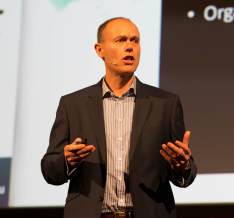Kellogg’s warms to data but insists scale and reach remain central pillars to business growth

John Broome
Kellogg’s is targeting a broader customer base, working with fewer agencies and driving a more emotional marketing message in a bid to remain competitive as its marketing director admitted FMCG companies have been slow to embrace the new data-driven world.
John Broome also flagged the imminent launch of a new range of products in a move to “remain relevant” and revealed Kellogg’s will switch marketing budgets away from traditional channels as it gains “confidence” around digital results.
As with the shift to data, the sector has been “slow” to move beyond the TV advertising it has relied upon for so long, he said.


Price promotions still factor heavily though it seems. From the moment the unstoppable campaign launched, i noticed the product was discounted at Coles & Woolworths. When suggesting ‘sales are up 20%’ how much of that can be attributed to promotional activity. And has the promotional pricing mix changed at all as they move more into non traditional channels? The rest of what’s been said is pretty much the norm.